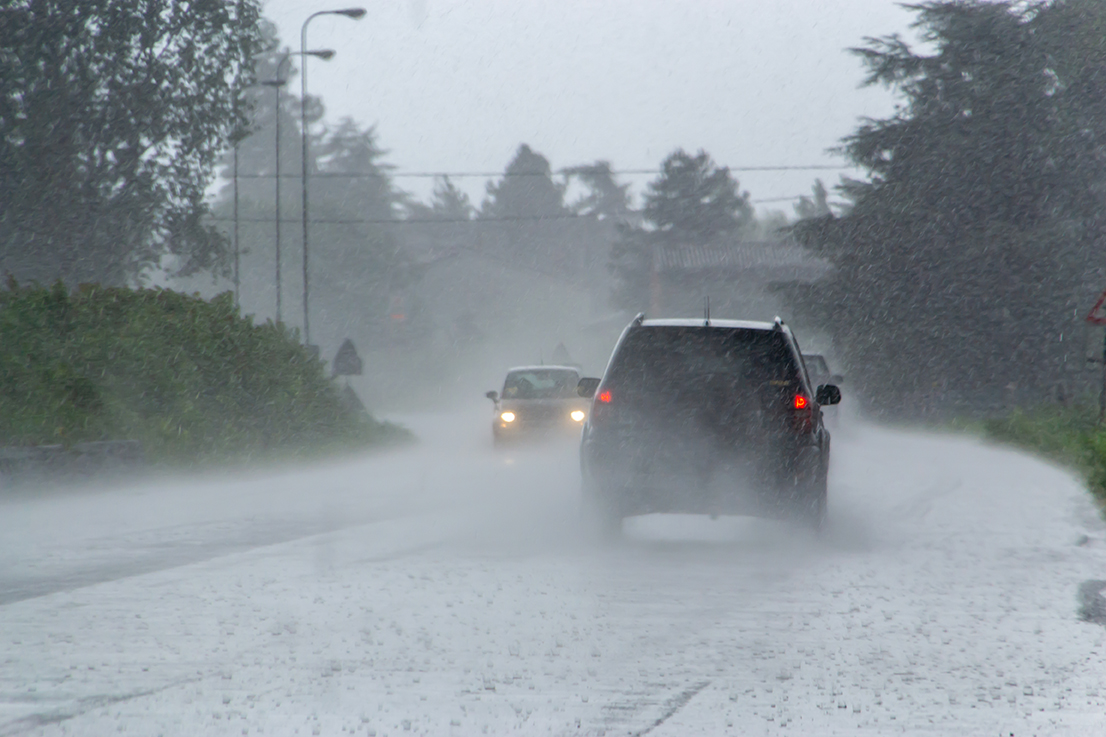Many people consider summertime to be the best time of year to introduce a young person to driving. This is because summer often features ideal weather conditions, meaning the best road traction, longer days to practice driving, and more time if your teen is on summer break. However, when it rains, it pours, and sudden downpours are not unheard of in most parts of Canada during the summer. If the water comes on suddenly, it may have nowhere to go, and the roads can become washed out quickly even in an urban area. Therefore, if you plan to teach your teen to drive in the summer months you will want to include a lesson on navigating wet and flooded roads.
Hydroplaning
Learning to identify and avoid hydroplaning is necessary knowledge for new drivers. After all, it’s not uncommon to drive through puddles in rainy weather.
Tire treads are meticulously designed to scatter water so that the tire’s surface can contact the surface of the road. When we drive through a deep puddle, our tire treads may not be able to scatter enough water, which means a layer of water remains between the tire and the road. “Hydroplaning” is when our tires can no longer meet the road, which leads to a loss of traction.
The best way to avoid hydroplaning is to slow down. Hydroplaning is much more likely to occur at higher speeds. Keeping your tires and wheels well maintained, with proper balancing and regular rotations, will also help prevent hydroplaning. And of course – do not use cruise control in the rain!
Different vehicles, different experiences
Your new driver most likely has limited experience behind the wheel. Usually this also means that they have only driven one or two vehicles. When you speak to your teen about driving in inclement weather, especially in the rain, you must emphasize that different vehicles handle differently in these conditions. For example, a heavy truck will navigate puddles differently from a small car. Some vehicles also feature better visibility in these conditions than others. Therefore, if you see a car on the road that’s going slowly, it may be the right choice for their own safety and the safety of others. Tell your teen to practice extending grace to other drivers on the road during poor weather conditions instead of becoming annoyed or driving aggressively.
Deep puddles and extreme weather
Flash floods are most common in the spring, summer and fall because of heavy rain and/or a sudden release of water by a dam or ice jam. If your teen notices water starting to pool on the roadway, the number one piece of advice is to find another route! Driving in a flooded area is never advisable.
Driving through deep puddles is especially dangerous because the water may be much deeper than it looks. You can never be sure of the road’s condition, depth of the water, or any debris that may be hiding at the bottom of a deep puddle. Even driving through six inches of water can cause your engine to stall. If you’ve ever been in this situation, you may have been surprised to learn how easily a vehicle can float!
In an emergency like a sudden flash flood, the vehicle may be forced to drive in a deep puddle regardless of the measures taken to avoid it. After exiting the flooded area, drivers can help dry their brakes by braking lightly while driving slowly.
Conclusion
The best advice to keep a new driver safe is to slow down in any wet weather and never drive distracted. Staying alert and aware of the “big picture” surrounding you is extremely important in any adverse weather conditions. Find an alternate route or pull over somewhere safe if you see the road beginning to flood, and always be watchful for other drivers who may be handling the poor weather differently.




